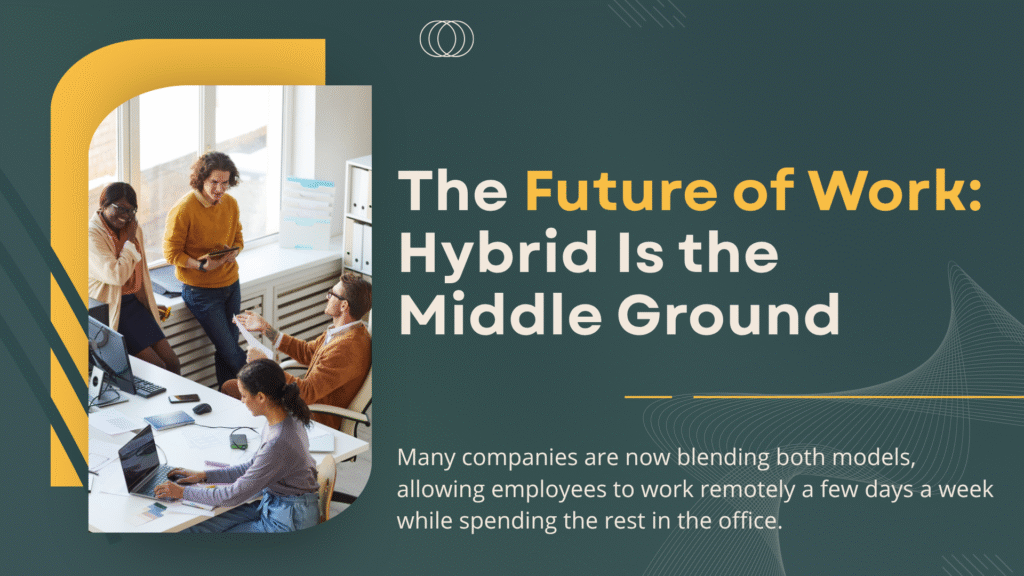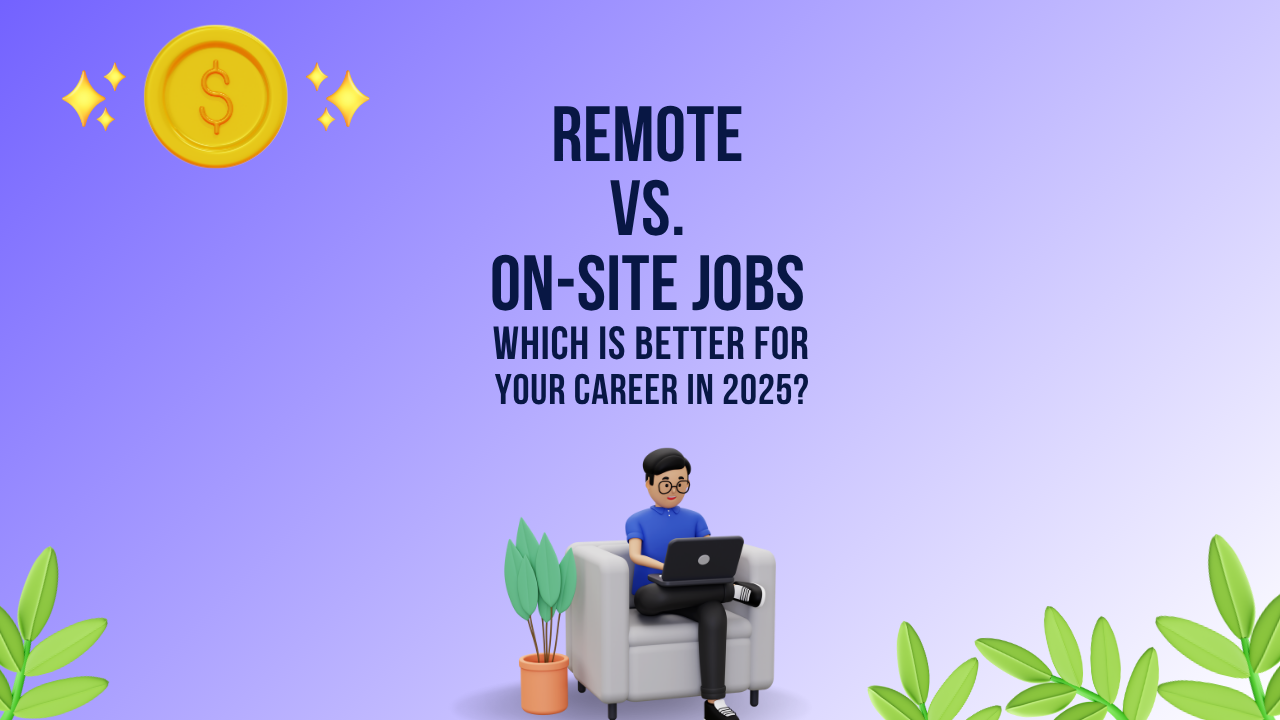Remote vs. On-Site Jobs: Which Is Better for Your Career in 2025?
In 2025, the world of work is more flexible than ever. With digital transformation and advanced collaboration tools, professionals now have the power to choose where they work — from the comfort of their home or in a buzzing office environment. But which option actually benefits your career in the long run? Let’s break it down step by step and explore the pros and cons of remote and on-site jobs, so you can make an informed decision about your next career move.
1. Flexibility and Work-Life Balance
One of the biggest advantages of remote jobs is the flexibility they offer. You can design your schedule, avoid commuting stress, and manage personal commitments more easily. This flexibility often leads to higher job satisfaction and better mental health.
On the other hand, on-site jobs follow structured working hours. For some, this structure provides discipline and helps maintain a clear boundary between personal and professional life. If you thrive in organized environments, an office setting might be ideal.
2. Productivity and Focus
Remote work allows people to create their ideal workspace — quiet, personalized, and distraction-free. Many employees report being more productive at home, as they can focus better without interruptions.
However, not everyone finds it easy to stay productive remotely. On-site jobs provide an environment designed for work, complete with team collaboration and managerial support. If you need external motivation or teamwork to stay on track, the office might help you stay productive.
3. Career Growth Opportunities
When it comes to career advancement, on-site employees often get more visibility and direct access to leadership. Face-to-face interactions can lead to faster recognition and promotions.
That said, remote professionals aren’t left behind anymore. Many modern organizations are now remote-first, offering digital mentorship programs, online skill development, and fair performance evaluations regardless of location. The key is to stay proactive in communicating your achievements and goals.
4. Networking and Team Collaboration
Building professional relationships is easier when you’re physically present.

On-site work naturally encourages networking, spontaneous discussions, and social connections. These informal interactions often lead to valuable opportunities.
In contrast, remote jobs rely heavily on virtual communication. Platforms like Slack, Zoom, and Microsoft Teams help maintain connection, but virtual networking takes more effort. If you’re an extrovert who enjoys daily collaboration, the on-site setup may feel more fulfilling.
5. Work Culture and Company Engagement
On-site jobs immerse you in company culture. You experience teamwork, leadership, and the organization’s values firsthand. Office events, celebrations, and shared lunches strengthen employee engagement.
Meanwhile, remote jobs depend on digital culture-building strategies. Companies that prioritize virtual engagement use online events, digital town halls, and recognition systems to keep employees connected. The quality of engagement depends on how effectively an organization manages its remote workforce.
6. Job Security and Stability
In 2025, both remote and on-site jobs offer stability, but the industries differ. Tech, digital marketing, and design roles lean heavily toward remote opportunities, while healthcare, manufacturing, and logistics still prefer on-site work.
Remote jobs may sometimes face instability if employers change work policies, but skilled professionals who continuously update their abilities stay secure. Meanwhile, on-site roles often come with long-term contracts and clearer paths for promotion.
7. Salary and Compensation
Contrary to old beliefs, remote workers are now earning salaries comparable to — and sometimes higher than — their on-site counterparts. Employers save on office expenses and invest more in talent, no matter the location.
However, on-site employees may still receive additional benefits such as meal allowances, travel reimbursements, or housing perks. It’s important to evaluate the full compensation package rather than just the paycheck.
8. Technology and Accessibility
Remote jobs rely on technology for communication, task management, and collaboration. In 2025, AI-powered systems, project tracking software, and secure digital platforms have made remote work smoother and more accessible.
For on-site employees, technology supports operations but isn’t the primary medium. Face-to-face communication still dominates, and technical issues are handled by internal IT departments. If you prefer hands-on problem solving, being on-site could suit you better.
9. Mental Health and Social Interaction
Working remotely can lead to isolation if not managed properly. Limited human interaction might affect motivation over time. That’s why many remote workers intentionally create social routines outside work or engage in coworking spaces.
Conversely, on-site jobs encourage natural socialization. Interacting with colleagues can reduce stress and foster a sense of belonging. Yet, commuting and office politics can sometimes create pressure — so it’s about finding your balance.
10. The Future of Work: Hybrid Is the Middle Ground
If you’re still unsure, there’s good news — the future of work is hybrid. Many companies are now blending both models, allowing employees to work remotely a few days a week while spending the rest in the office.

This hybrid model combines flexibility with teamwork, offering the best of both worlds.
Final Thoughts
Choosing between remote and on-site jobs in 2025 depends on your personal goals, work style, and industry. Remote work offers independence, flexibility, and digital growth opportunities, while on-site work provides structure, social engagement, and immediate visibility.
Ultimately, the best career choice is one that aligns with your lifestyle and ambitions. Whether you choose to work from home or return to the office, focus on building your skills, maintaining professional discipline, and growing your network — because success is not about where you work, but how you work.


